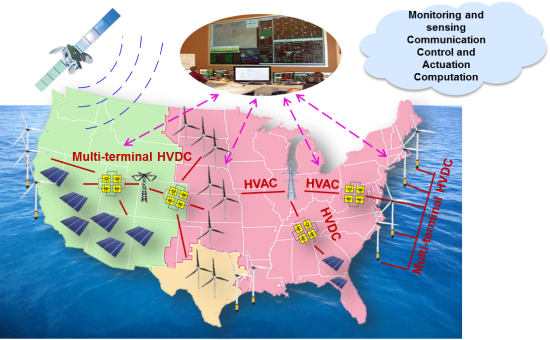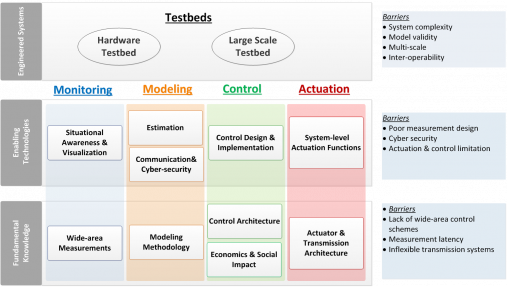Research

Perhaps the most important technical challenge facing our nation over the next several decades is how to address societal energy needs without heavy reliance on fossil fuels. Less appreciated in this discussion is the critical role that the electric power system transmission infrastructure must play in any viable solution.
Most economically viable renewable energy resources are located far from population centers, or have characteristics that make operation on a local basis difficult. In addition, these resources often have daily cycles that correlate poorly with local demand. Moreover, one of the most effective ways proposed to reduce the carbon footprint is to shift the nation's transportation load to the electric grid through plug-in hybrid or all-electric vehicles. This proposed migration from combustion engines combined with the eventual retirement of coal-fired generation plants will require the development of new large-scale generation.
The core challenge facing operation of an extremely large and complex electric network with tens of thousands of transmission lines, buses, and potentially millions of control points remains unaddressed. Fundamental breakthroughs are needed to control interconnection-wide dynamics and manage resources across vast geographical distances, widely varying timescales, and diverse production sizes.



